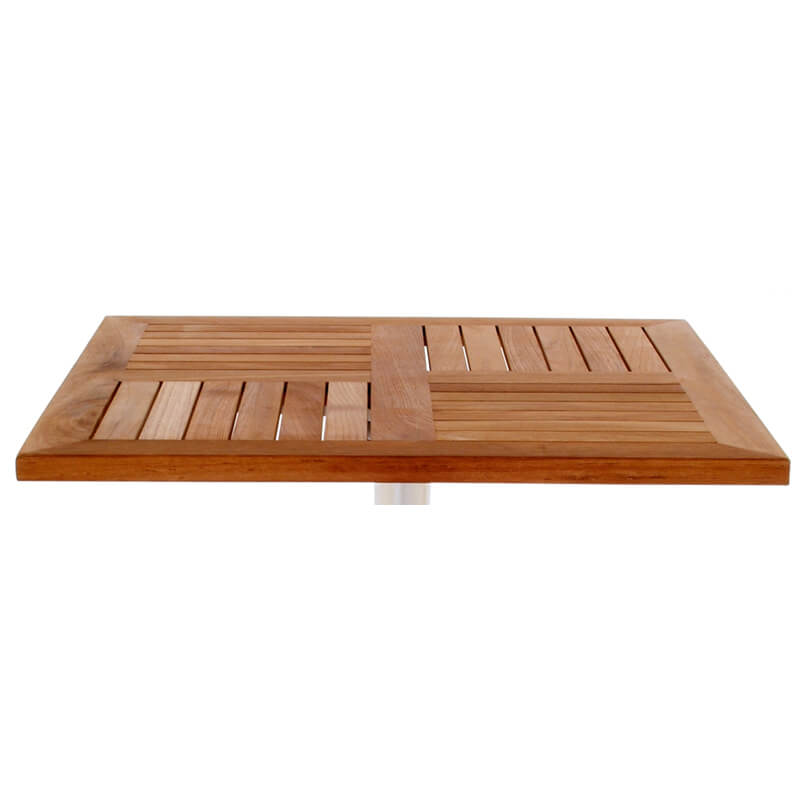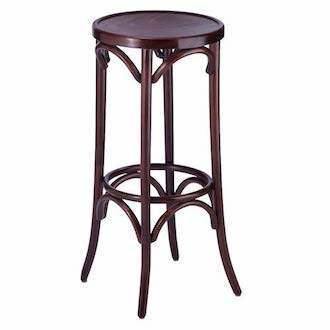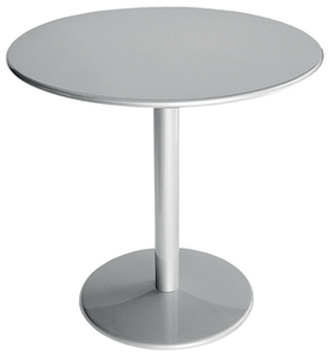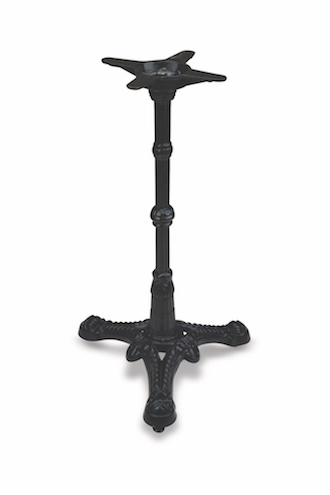
Wood can never go out of style. A wooden table top can go with any kind of furniture, and a fresh coat of polish can revive even the oldest tables. This material is used for furniture globally, and we don’t think it is ever going to go out of style. Home, office, and restaurant furniture made of wood is considered the most sophisticated. Any wood type can be used in creating and designing restaurant furniture, each imparting its distinct characteristics, such as color, style, dimensions, and warmth, thereby enhancing various décor themes. This wood tabletop guide will uncover the various types of wood and their attributes, as well as the materials utilized in constructing restaurant tables. Here are the various types of table tops and all you need to know about them.
The Different Types of Wood Table Tops
Before understanding the different constructions of table tops, get to know the different types of tops.
Butcher Blocks:
Butcher blocks are countertops that are available in various colors, and styles and can even be used for kitchen work. The solid wood table tops can be polished and some of these come with modifications. Choosing the perfect wood table top can be daunting. To aid you in your decision-making process, we have crafted this guide, which will explore various wood types, tabletop construction and design, and other wood-like materials.
Plank Table Top:
The plank table top is a thick sheet of wood, which is treated to give it a glossy finish. This tabletop looks more luxurious than sturdy but is usually made of softwood like pine and cedar.
Solid Wood Butcher Block Table Top
Butcher block tables typically consist of two-inch wide wood strips, with lengths ranging randomly from six inches to twenty inches. These tabletops are constructed by bonding wood strips together with the edge grain visible on top, the butcher block possesses exceptional strength and durability compared to most other wood table tops. The irregularity in the length of the wood pieces also contributes to the visual allure and charm of the tabletop.
Solid Wood Plank Table Top
Plank tables feature thickness between four-inch and six-inch wide strips with uniform lengths, adhered together with the face grain facing upwards. The plank design exudes a more traditional aesthetic and is often found in upscale restaurants due to its classic appeal. While the butcher block design is favored for its arrangement of wood blocks, the plank design is cherished for its luxurious, timeless look and usability.
Hardwood and Softwood Tops
By now we have established that butcher blocks are a solid choice for your table tops in the kitchen, or in the living area. However, in restaurants and public eateries, table tops need to be rugged, and butcher blocks are a great choice. However, the use of hardwood is a sturdy choice because the dining table serves as the centerpiece of every restaurant. The selection of tables has to be for longevity and easy maintenance. Hardwood is sourced from broad deciduous trees, contrasting with softwood derived from conifer trees. Table tops crafted from hardwood have greater resistance to years of wear and tear. Hardwoods generally have darker hues, while softwoods tend to feature lighter shades. This feature can add to the formal look of your restaurant without any extra effort. Due to their enhanced durability, hardwoods are typically more expensive.
Hardwood is used in all kinds of formal and commercial-grade furniture. It is a popular wood species favored for restaurant tables in industrial, rustic, and mid-century needs. Some of the most traditional themes include beech, maple, and oak. For those seeking a lightweight and more economical alternative, softwood species such as pine may suffice. However, it's important to note that while softwoods are cheaper, they are less durable because they can bend over time and may dent easily. Here are some of the popular hardwood and softwood options for your table tops:
Hardwoods: Beech, Maple, Oak, Ash, Mahogany, Rubberwood
Softwoods: Pine, Spruce, Cedar
Wood will remain the predominant material used for furniture in restaurants, homes, and offices. Any type of wood can be used for constructing and designing restaurant furniture, with each wood type giving its unique characteristics, adding varying degrees of color, style, dimensions, and warmth, thereby accentuating and enhancing most décor themes. This guide will help you understand the various types of wood and their respective characteristics, as well as the materials employed in constructing restaurant tables.
Butcher Block Vs. Plank Wood Table Tops
Choosing the appropriate wood table top can be a tough decision because all kinds of wood have their specific benefits or drawbacks. Then, you have the choice of laminates and resin, which can be attractive for any living space. However, when it comes to longevity, choose the wooden table top that will last the longest and requires low maintenance.
Wood type and use
Selecting the right furniture for your venue involves a delicate balance of style, affordability, and durability, especially when considering materials for restaurant tables. While you may admire the glossy and timeless appearance of a plank wood table top, its cost may exceed your budget. Alternatively, a laminated table top could offer a more budget-friendly and low-maintenance option.
You might wonder how the durability of these options compares to other wood table tops. The table below outlines the types of wood table tops available and their characteristics:
Solid Wood:
Constructed entirely from solid wood with various edge options. Easily refinished, repaired, sanded, and stained to conceal damages. While it may have a higher initial cost, it requires less frequent replacement and can be refinished multiple times.
Veneer:
Consists of a core made from manufactured wood such as plywood, with a thin layer of wood veneer on top and edges. Resistant to warping, retaining its appearance long-term. Moderately priced, falling between laminate and solid wood table tops in cost.
Laminate:
Features a similar core as veneer, with a laminated sheet on the surface and various edge options. Designed to withstand heat, spills, and scratches, but may show signs of damage and wear over time. Affordable, easy to clean, and low maintenance.
Wood Table Edges
There are several types of edges available for wood restaurant tables, with the most popular and practical options being the bullnose, eased, and waterfall edges. Here is what each of these edges means:

Bullnose:
Rounded table edge with a radius typically half of the table top thickness, offering a classic look. This edge is the most common and therefore appeals to the guests and restaurant owners.
Eased:
This table edge has a more rounded appearance and does not exceed one-sixteenth of an inch, resulting in a polished and clean appearance.
Waterfall:
Combines elements of the bullnose and eased edges, featuring a rounded section followed by a straight edge for a distinctive look.
Conclusion
Knowledge of all these table tops and types of edges will allow restaurant owners and homemakers to decide which wood table top is best for the furniture they select for a designated space. The wood tabletop guide explains all the facts and differences between various table tops in use.




























































